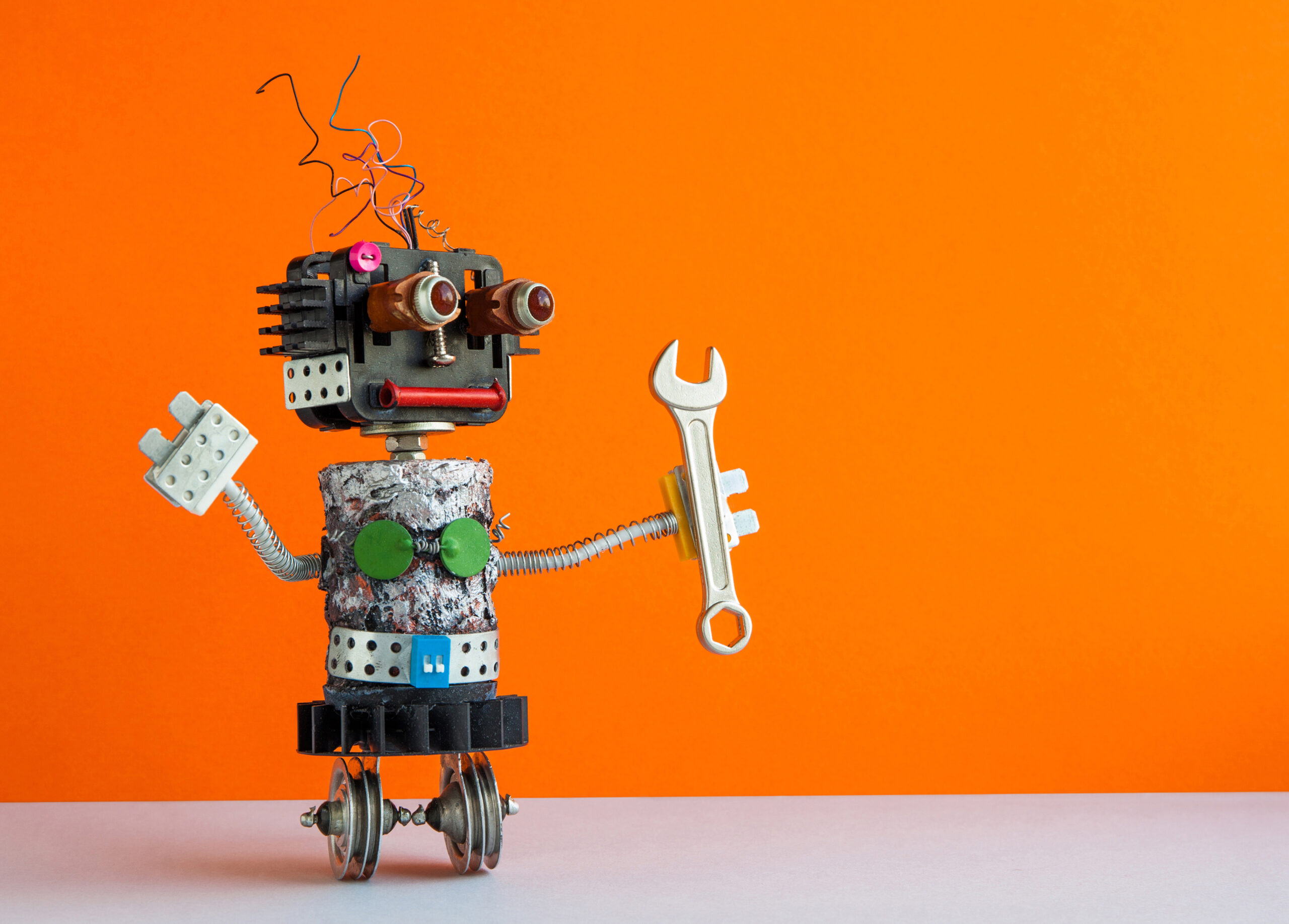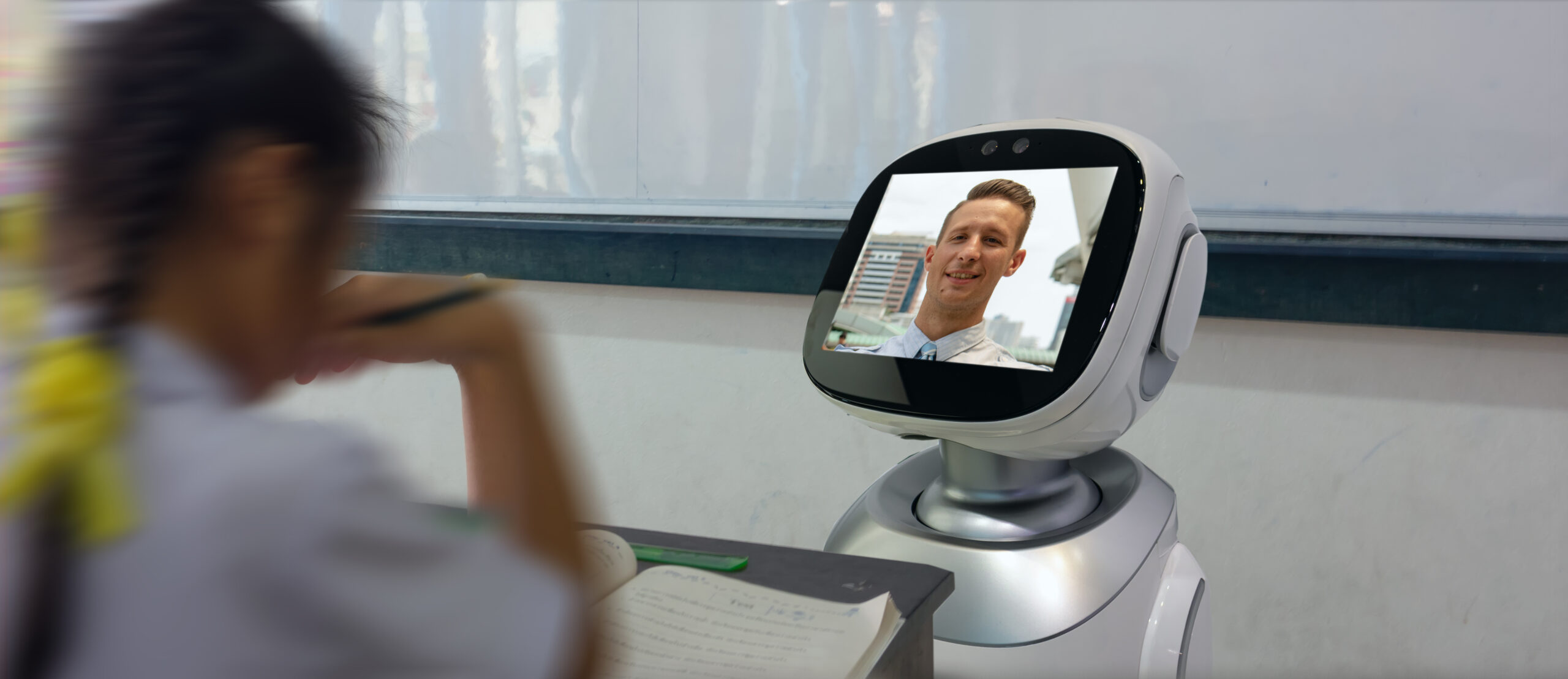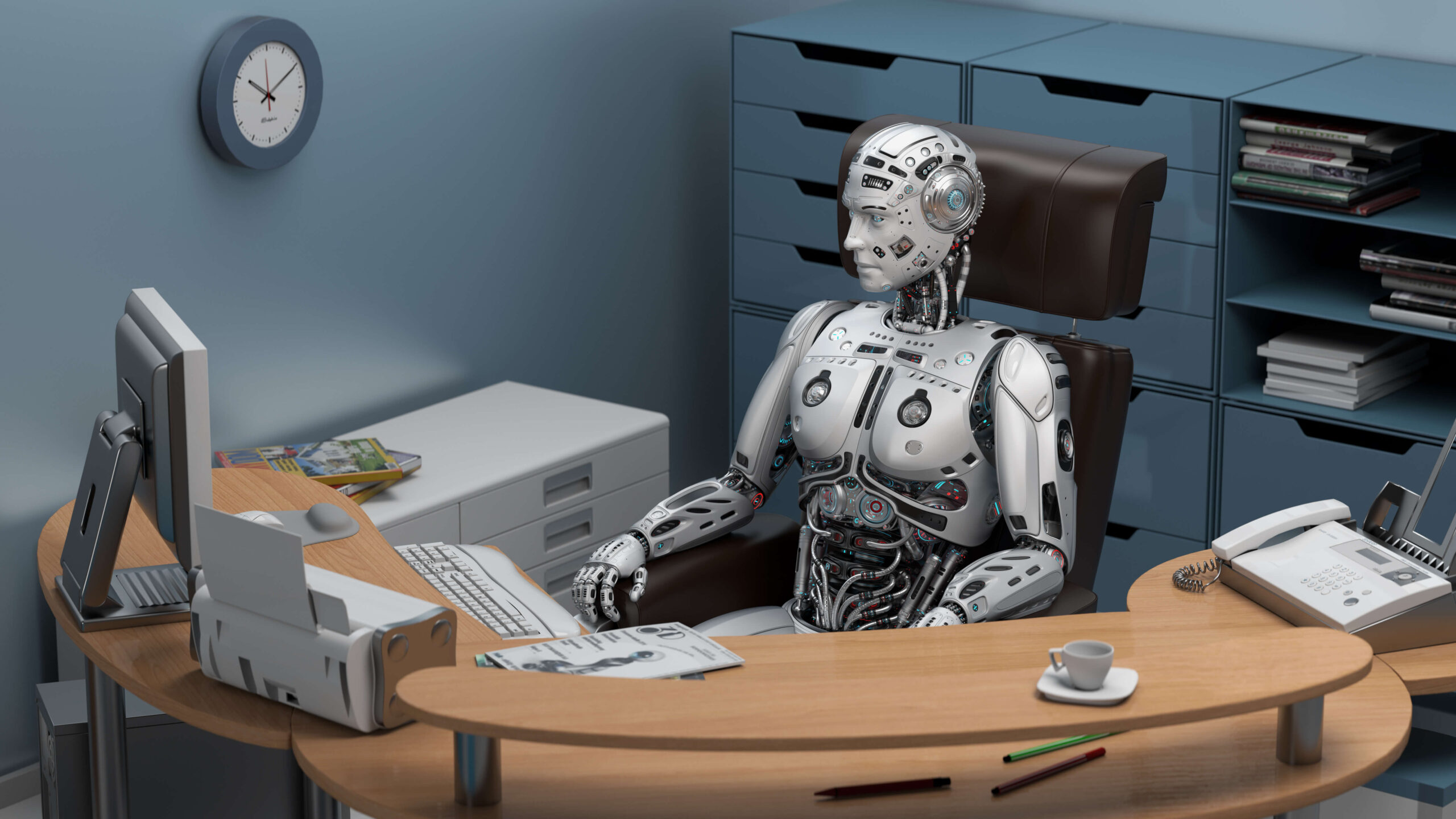
We are at the cusp of a major shift in civilization. For the first time in a 100 years we are talking about producing more electric cars than the ones that chug along on fossil fuels. The major workforce of the world is able to function from the convenience of their homes, putting less stress on public transport, thereby reducing the carbon footprint of the planet. Elon Musk is serious about colonizing Mars, so, one imagines, we’ll start polluting space and/or other planets instead. Back home, on Planet Earth, we’re getting used to the sight of a circular, bleeping and blooping disc gliding along the floor of our homes and keeping it spick and span. While robotic domestic cleaning aids are not yet de rigueur, and they’re most certainly not a substitute for professional house help yet, it is quite wonderful to have Star Wars-like tech right in the milieu of our own homes.
The future seems to be here, it seems. Self-driving cars? Fuzzy logic, machine learning, robot dogs that can jump and climb stairs, surgical arms for precision surgery, prosthetic limbs with biological dexterity, robots with citizenship that want to have children of their own. Are synthetic human beings the next step? Did we witness the beginnings of story-telling boxes to the millennium man in one generation? What would Asimov say?
Here’s the thing about living through a paradigm shift. You’re able to witness both the past and the future with visionary clarity. And that’s what’s happening with homo sapiens right now. As human beings make a transition from mechanical automation to true AI-driven automation, we are able to look back and ahead at the same time and mould the future to perfection. A hundred-odd years ago, humans dreamed of futuristic humanoid robots who would clean our homes, work in our factories, deliver pizza, drive our cabs and cook our food. But, in 2021, that comprehensive robotic reality is yet to materialize, and with good reason.

We don’t need human-like robots for everything. We spoke earlier of cars that drive themselves? There’s no android robot sitting in the seat turning on the windscreen wipers because we combined the android robot’s brain with the engine of our car. Instead of having a ditzy, Marilyn Monroe-esque robot tiptoeing around our house mopping the floor, we’ve got perfectly ordinary frisbee-like robots cleaning up behind us. Even when their features expand from the floor and onto the dust on bookshelves and cobwebs on the ceiling, they won’t, in all probability, assume a humanoid form. Why? Because they don’t need to. For example, remember the tactical robots in Chris Nolan’s Interstellar? There were four of them, named TARS, CASE, KIPP, and PLEX. And they were essentially rectangular boxes that could split into four and gallop along like horses. They didn’t need to be in any sort of biologically recognizable or humanoid form, and therefore, most of the robotic workforce that we will put out there will not need a human form factor either. Fully automated car manufacturing units seem to prove this. Even interstellar travel will probably require Wall-E-style terrain robots rather than nimble-footed bipeds like us.
So, where will we require a humanoid fit? Probably in places where human agility plays an important role. Possibly, the major sphere where humanoid robots would find active duty would be in security forces. Not just the army but local police as well. You see, law and order situations require both intelligence and agility. In certain physical altercations, you have to exercise physical force and athletic ability. If you have to chase down a burglar on foot, chances are a nimble humanoid robot with the advantage of an AI-based neural system will be able to complete that task much better. That robot could also probably survive gunshots better than their carbon-based counterparts. A definite advantage. Another field of humanoid robot application could well be sports. Probably not the Olympics, where feats of physical human achievements are celebrated, but who knows… contact sports like boxing, mixed martial arts, etc, could find a specialized niche for robotic participants. We may end up having synthetic humans play football, admittedly slightly inferior to the intuitive capabilities of Messis and Ronaldos, but still highly entertaining. It could just be the future of sports entertainment – a 3D extension to multiplayer online gaming.
The fact remains, there’s always a slight gap between human imagination and its ultimate application. But for the most part, we are able to envision with some clarity how (we want) the future to play out. Of course, humanoid robots today may not have positronic circuitry, and while they certainly look like they’re a part of the future, they might not be as domesticated as we fondly hope them to be. They may not hop, skip and jump between planets, but they may just augment our dreams for a utopian future. Nevertheless, we can certainly hope for the world that Steven Spielberg, Gene Roddenberry, and Asimov hoped for, and with some good luck and good management, we may, as Capt Jean-Luc Picard of the USS Enterprise often said and well, make it so. I’m keeping my robotic fingers crossed.



70 Comments
Rodolfostarf
mexican drugstore online
https://cmqpharma.com/# mexican mail order pharmacies
purple pharmacy mexico price list
EdwardLor
http://canadapharmast.com/# medication canadian pharmacy
Charlesfaf
buy medicines online in india [url=https://indiapharmast.com/#]buy medicines online in india[/url] reputable indian online pharmacy
Davidodorb
rate canadian pharmacies: best canadian pharmacy – canadian online drugs
Davidodorb
canadian compounding pharmacy: canadian pharmacy drugs online – legitimate canadian mail order pharmacy
Michaelenaph
best online pharmacies in mexico: mexican pharmacy – mexico pharmacy
Charlesfaf
mail order pharmacy india [url=http://indiapharmast.com/#]indian pharmacies safe[/url] indian pharmacy
EdwardLor
https://indiapharmast.com/# Online medicine home delivery
Davidodorb
india pharmacy mail order: top 10 pharmacies in india – world pharmacy india
Davidodorb
india pharmacy mail order: top 10 online pharmacy in india – india pharmacy mail order
Michaelenaph
certified canadian international pharmacy: canadian pharmacy antibiotics – canadian world pharmacy
Charlesfaf
reputable mexican pharmacies online [url=http://foruspharma.com/#]medication from mexico pharmacy[/url] mexican border pharmacies shipping to usa
Michaelenaph
mail order pharmacy india: top 10 online pharmacy in india – reputable indian online pharmacy
Davidodorb
cheapest online pharmacy india: indianpharmacy com – п»їlegitimate online pharmacies india
Davidodorb
mexican drugstore online: mexico drug stores pharmacies – mexico pharmacies prescription drugs
EdwardLor
https://canadapharmast.com/# canadian pharmacy online ship to usa
Charlesfaf
Online medicine home delivery [url=https://indiapharmast.com/#]cheapest online pharmacy india[/url] pharmacy website india
Michaelenaph
canadian discount pharmacy: reliable canadian online pharmacy – cheap canadian pharmacy
Davidodorb
top 10 pharmacies in india: india pharmacy – п»їlegitimate online pharmacies india
Davidodorb
indianpharmacy com: indian pharmacies safe – top 10 online pharmacy in india
Charlesfaf
trustworthy canadian pharmacy [url=http://canadapharmast.com/#]canadian pharmacy prices[/url] canadian pharmacy no rx needed
EdwardLor
https://canadapharmast.com/# best canadian pharmacy to buy from
EdwardLor
https://indiapharmast.com/# best india pharmacy
Davidodorb
п»їlegitimate online pharmacies india: reputable indian pharmacies – world pharmacy india
Charlesfaf
canada pharmacy online [url=http://canadapharmast.com/#]canadian pharmacy sarasota[/url] canada rx pharmacy
Davidodorb
top 10 pharmacies in india: mail order pharmacy india – indianpharmacy com
Michaelenaph
purple pharmacy mexico price list: medication from mexico pharmacy – mexican mail order pharmacies
Davidodorb
canadian pharmacy online: buy canadian drugs – canada pharmacy
Davidodorb
mexican drugstore online: mexican mail order pharmacies – mexico pharmacy
Charlesfaf
buying from online mexican pharmacy [url=http://foruspharma.com/#]pharmacies in mexico that ship to usa[/url] mexican drugstore online
Michaelenaph
mexico pharmacy: mexico pharmacy – buying from online mexican pharmacy
EdwardLor
https://foruspharma.com/# medication from mexico pharmacy
Davidodorb
legitimate canadian online pharmacies: safe canadian pharmacy – canadian pharmacy 24
Davidodorb
medication from mexico pharmacy: medicine in mexico pharmacies – buying from online mexican pharmacy
Michaelenaph
reliable canadian pharmacy: vipps canadian pharmacy – adderall canadian pharmacy
Jamesuterb
doxycycline 200 mg pill: doxycycline 300 mg price – doxycycline 40 mg india
Thomastierm
https://clomiddelivery.pro/# order generic clomid without rx
Thomastierm
http://paxloviddelivery.pro/# paxlovid india
Myronnus
http://doxycyclinedelivery.pro/# doxycycline 100g tablets
paxlovid covid [url=https://paxloviddelivery.pro/#]paxlovid generic[/url] paxlovid pill
Thomastierm
http://paxloviddelivery.pro/# buy paxlovid online
Thomastierm
https://doxycyclinedelivery.pro/# doxycycline 100mg capsules
Jamesuterb
п»їpaxlovid: paxlovid india – paxlovid cost without insurance
Myronnus
https://doxycyclinedelivery.pro/# doxycycline where to get
doxycycline 50mg capsules [url=http://doxycyclinedelivery.pro/#]doxycycline price singapore[/url] doxycycline 20mg canada
Thomastierm
https://doxycyclinedelivery.pro/# doxycycline 50 mg generic
Thomastierm
https://ciprodelivery.pro/# ciprofloxacin 500 mg tablet price
Myronnus
http://ciprodelivery.pro/# cipro ciprofloxacin
paxlovid generic [url=http://paxloviddelivery.pro/#]paxlovid for sale[/url] paxlovid pharmacy
Jamesuterb
paxlovid for sale: paxlovid pharmacy – paxlovid buy
Thomastierm
https://paxloviddelivery.pro/# paxlovid for sale
Thomastierm
http://doxycyclinedelivery.pro/# doxycycline for sale over the counter
Jamesuterb
can i buy generic clomid without a prescription: where to get cheap clomid prices – clomid generic
Thomastierm
https://clomiddelivery.pro/# clomid for sale
Thomastierm
https://paxloviddelivery.pro/# paxlovid pharmacy
Myronnus
http://paxloviddelivery.pro/# paxlovid covid
ciprofloxacin 500mg buy online [url=https://ciprodelivery.pro/#]buy cipro online[/url] buy generic ciprofloxacin
Jamesuterb
how can i get cheap clomid no prescription: buy generic clomid without insurance – cost of clomid online
Thomastierm
http://clomiddelivery.pro/# buy generic clomid prices
Thomastierm
http://ciprodelivery.pro/# ciprofloxacin generic
Myronnus
https://ciprodelivery.pro/# cipro
generic amoxicillin online [url=http://amoxildelivery.pro/#]antibiotic amoxicillin[/url] buy amoxicillin from canada
Thomastierm
http://ciprodelivery.pro/# buy cipro
Thomastierm
https://clomiddelivery.pro/# can i get clomid
Jamesuterb
clomid pill: can i buy generic clomid – order cheap clomid without dr prescription
Myronnus
http://paxloviddelivery.pro/# paxlovid covid
buy paxlovid online [url=https://paxloviddelivery.pro/#]paxlovid pharmacy[/url] buy paxlovid online
Thomastierm
https://doxycyclinedelivery.pro/# where can i get doxycycline over the counter
Thomastierm
http://ciprodelivery.pro/# antibiotics cipro
Myronnus
https://clomiddelivery.pro/# clomid online
can i order generic clomid now [url=https://clomiddelivery.pro/#]cost of clomid pill[/url] how to buy clomid
Jamesuterb
cipro pharmacy: ciprofloxacin 500mg buy online – buy generic ciprofloxacin
Thomastierm
http://amoxildelivery.pro/# amoxicillin 750 mg price
Thomastierm
http://ciprodelivery.pro/# ciprofloxacin generic price
Jamesuterb
buy amoxicillin online mexico: amoxicillin capsule 500mg price – price for amoxicillin 875 mg
Jamesuterb
amoxicillin 500mg capsules antibiotic: where to buy amoxicillin pharmacy – how to get amoxicillin over the counter
Jamesuterb
buy cipro: cipro 500mg best prices – cipro